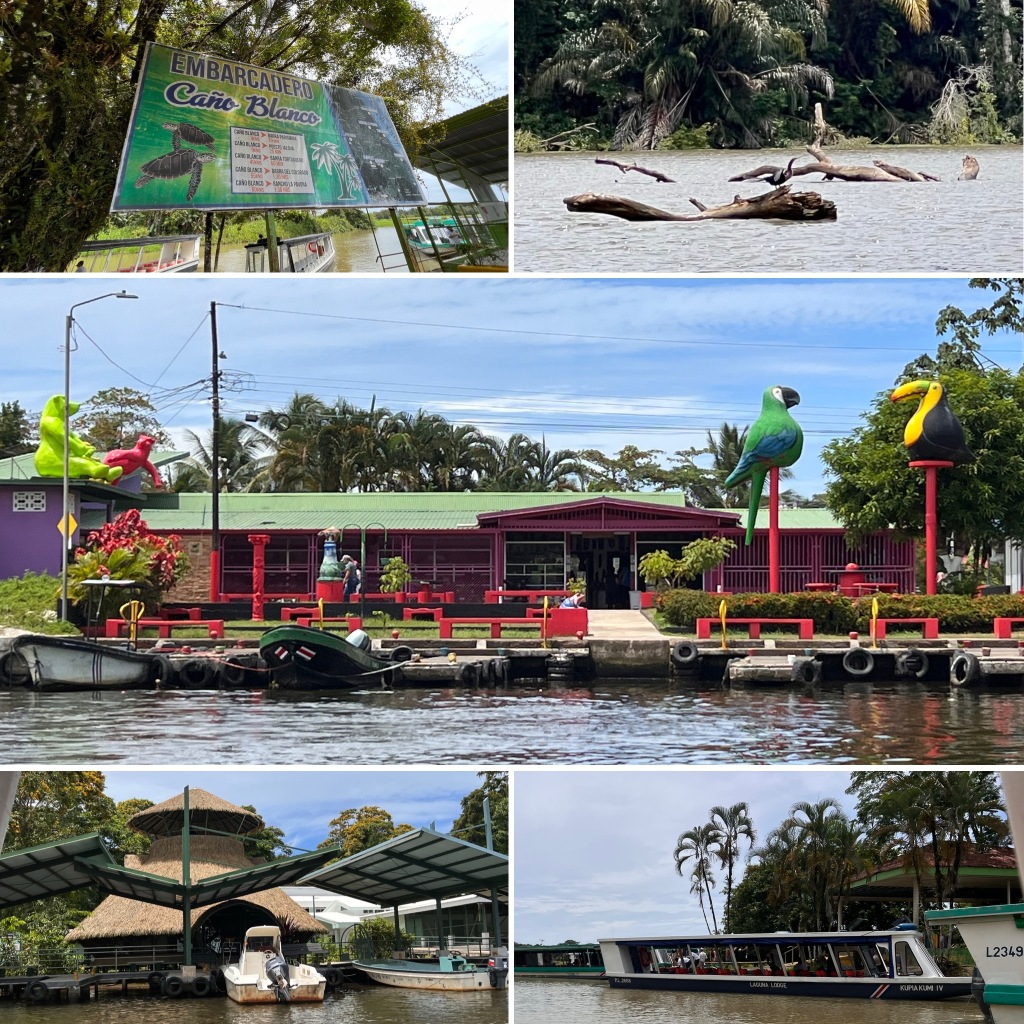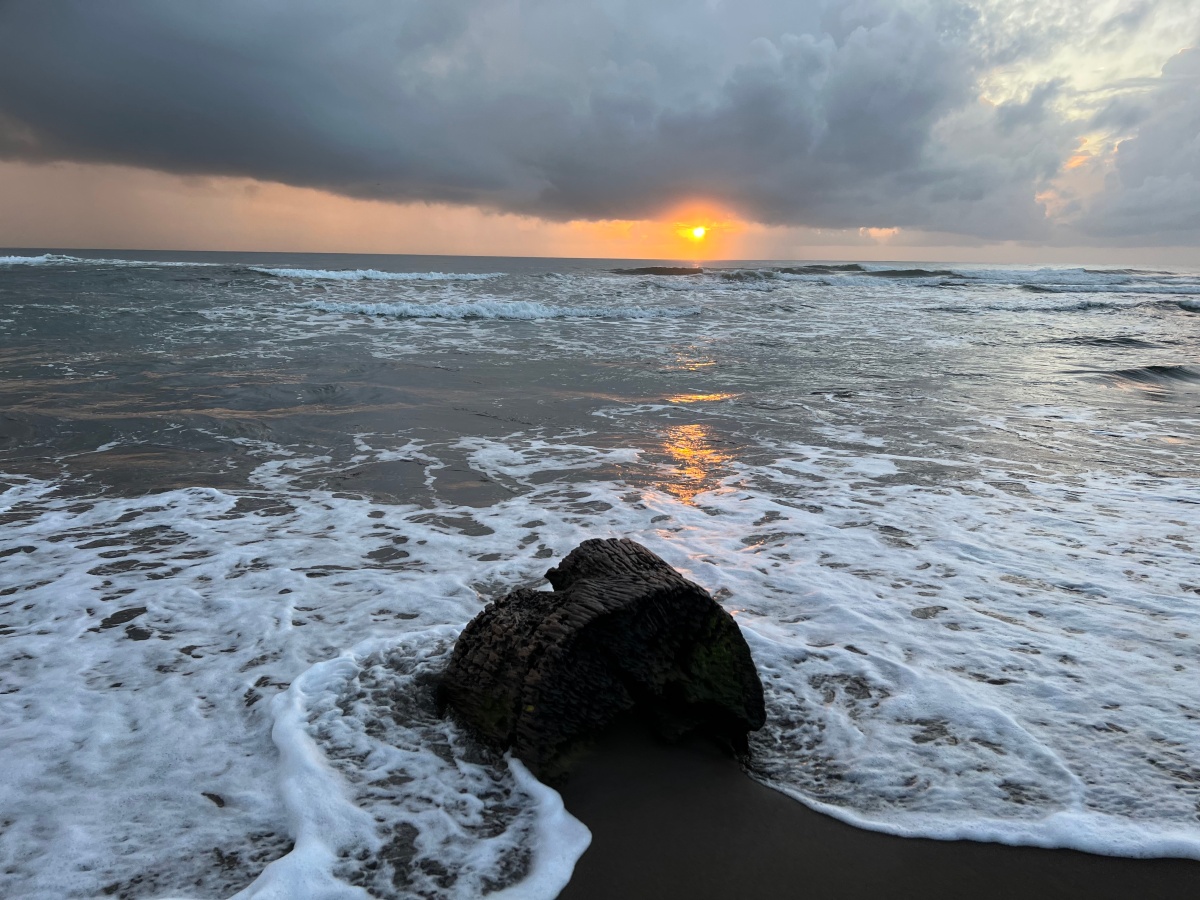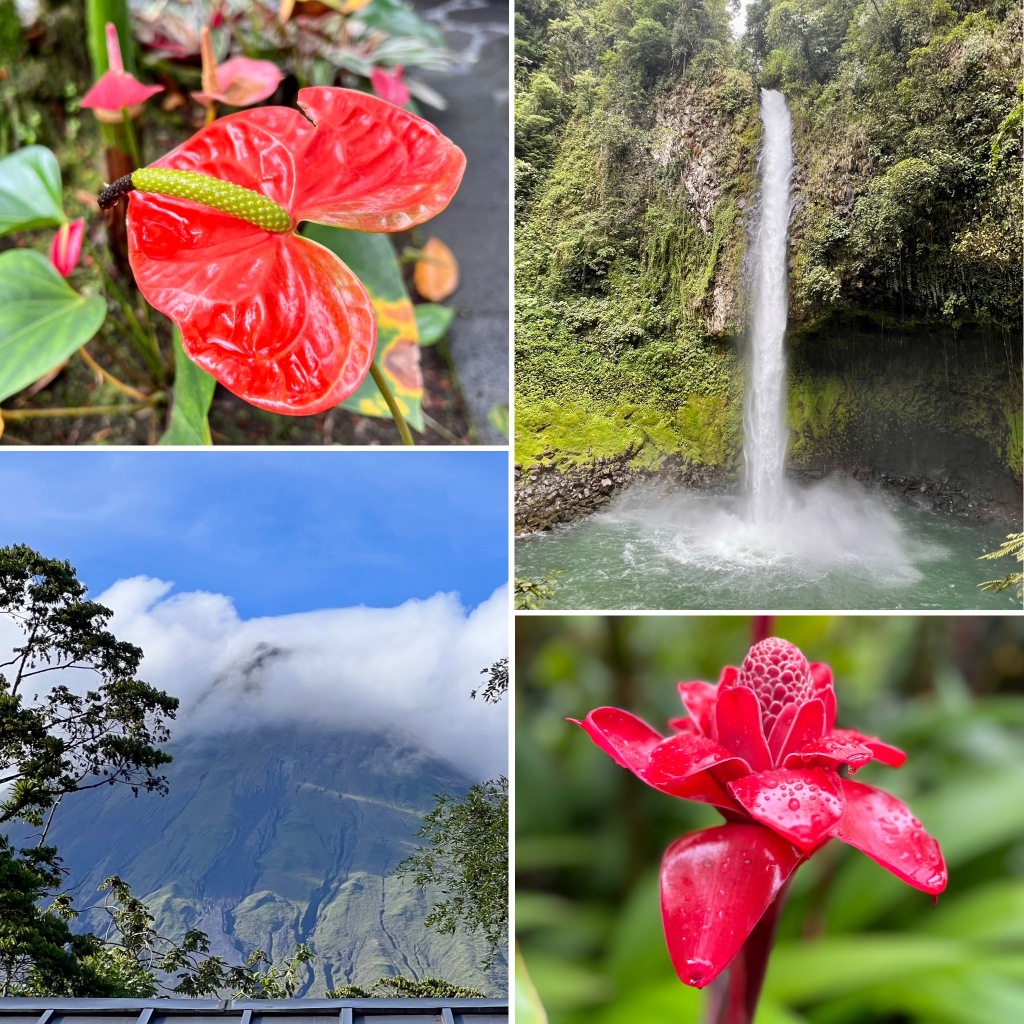Of the many amazing memories from our family’s recent Costa Rican adventure, nothing tops the experience of a mother’s fight to save the future.
Our rendezvous was set for 9:30, in the black of the night. Few instructions were given.
Wear dark clothes. Keep quiet. Wait by the oceanside edge of the property until the guide arrives.
All of it seemed clandestine. As if we were on a mission in need of a codename.
There were nine of us, four adults and five kids; two families in a foreign land. Armed with flashlights and headlamps, we arrived at the appointed meeting place early. Within minutes, a silhouette appeared out of the darkness. Our objective was in sight, he told us, far sooner and, hence, much closer than anticipated.
With little else said, we fell into a jagged line, not quite single file, and started down a dirt path. Ricardo, the man we’d paid to deliver us to a first-in-a-lifetime experience, led the way forward. Roughly a quarter mile out, we reached a break in a natural fence of palms, roots and vines.
Our first careful steps were complete without incident. No one had stepped on a snake nor encountered a jaguar nor any other dangerous lifeforms inhabiting the area, where exotic animals overwhelmingly outnumber people.
Lights out, Ricardo brought us onto a beach of dark volcanic sand. Several other groups clustered nearby, huddling around their own guides. They too were dressed for the mission.
The roiling Atlantic slammed ashore. Lightning flashed in the distant Northern sky. More eerily, vultures glided directly overhead.
A hundred feet or so away, the reason we were here was entrenched and entranced, hurriedly working to prolong its very existence. In the next hour, it would mesmerize and inspire us. And leave us with an indelible memory from an adventure rich in natural wonder.
We had been in Costa Rica for nearly a week. Setting out from San Jose, my wife and I, our son and daughter, and our travel companions, a family of good friends, first traveled into the tropical rainforest enveloping Sarapiqui. For two days, we crossed suspension bridges, listened to howler monkeys, marveled at spider monkeys swinging between branches, observed sloths hanging from branches, admired birds in colorful arrays, looked out for poisonous spiders and frogs and even spotted a sun-bathing caiman, apart from reptiles shaded by plants and trees.
At rest, we indulged in fresh fruits and vegetables and I engaged in the diligent study — more social than scientific — of Costa Rican craftsmanship served mostly in 12-ounce bottles. The most basic and prevalent being Imperial, a garden-variety equivalent to the pasteurized concoction introduced in the States by Adolphus Busch. Luckily, like the wildlife itself, there were also rarer, more aesthetically pleasing alchemies to be enjoyed on every leg of our journey.

The next of which required traveling by van, bus and boat.
Our travel itinerary was plotted by Tony, husband and father in the second family of our group. Years ago, before Boston became his home and teaching his occupation, Tony was a guide in his native Costa Rica. He knows where to go; and what to stay away from. He speaks the language, from slang to dialects, and reads the landscape of every place and situation.
So far, he delivered with flying colors to match the macaws squawking from treetops. We were just getting started.
On the fourth morning of our trip, we woke extra early. A privately-hired driver, Freddie, took us about an hour away to catch a bus chartered by our next hotel located along the Caribbean coast. We rode past Limon and the nearby Banana plantations and packing sheds for companies like Chiquita and Del Monte. A guide along for the ride narrated a history lesson. About the produce companies. About the railways built to move their fruits. About the immigrants hired to lay the tracks. About past exploitation, when this lush land was labeled a ‘banana republic.’
Along the bumpy way, we paused for a roadside peek at workers preparing bananas for export. Large batches of green bananas wrapped in blue plastic bags were pulled manually on lines hanging from a system of orange tracks into the shed for inspection. The narrator said the young men towing the dozens of bundles weighing hundreds of pounds at a time, with long lines looped around their midsections, walk as many as 30 kilometers a day in the sweltering conditions.
Inside the shed, bananas were washed and inspected. The good ones would soon be shipped to other countries. They, like pineapples, rank high on Costa Rica’s list of exports. But they’re not at the top. Number one is medical equipment.
As for what enters Costa Rica, its most mutually-beneficial imports, if I may, are people like us: tourists. The country’s ecotourism ‘industry’ dates to the 1960s, when about a quarter of its territory was still in its natural state. In the decades since, it became the first tropical nation in the world to reverse deforestation. According to the World Bank, its “tropical rainforests now cover close to 60 percent of the country.” In 2019, per The Borgen Project, Costa Rica attracted 3.4 million tourists.
That was pre-COVID. Whatever the post-pandemic numbers wind up in 2023, we’re lucky to be counted among them.
Next stop was near the village of Tortuguero. Getting there required another change in Caño Blanco. That’s where we got off the bus and onto a boat that ferried us north for the next two-plus hours. We ended up amid the nearly 47,000 protected acres of the Tortuguero National Park, where the relationship between unblemished earth and economic opportunity is obvious.
Established in 1970, the TNP includes more than 20 miles of undisturbed beaches on the Atlantic. Several hotels and eco-lodges are close by. The nearest town, Tortuguero, has a population between 1,200 and 1,500. Walking the 1.2 kilometers of its main path through town, where an ATV was the lone motor vehicle spotted, we witnessed how rigidly conservation laws are enforced and observed. Receptacles for waste were numerous. A large recycling center dominated the central part of town. Locals moved around on land by bikes and two feet.
Others stood ready to attend to the needs and wants of their globe-trotting guests drawn to the area’s natural surroundings. Upwards of 100,000 of them — from birders to botanists to those of us who barely recognize the difference between the two — annually visit TNP and its neighboring spots (in non-pandemic times). Our excursion introduced us to families from Great Britain, Germany and Switzerland.
Eventually, we met one of the thousands of other visitors who come each year from distant lands by sea. They scull through ocean waters from feeding grounds as many as 1,600 miles away, their single-clawed flippers beneath a hard shell propelling them, naturally, at a tortoise’s pace of 1.5 to 6.5 miles an hour. All to nest their next generation.
Tortuguero is considered the second-largest green sea turtle rookery in the world and most important in the Atlantic. According to published estimates, between 20,000-to-30,000 females annually swim ashore to nest around 100-to-110 eggs each. ‘Turtle Season’ officially runs from July to September. We showed up with four days left in June.

The first two of our three days there, we filled the hours with pre-breakfast and late-afternoon wildlife tours, family pool time, trips into town, beach walks and three squares of terrific local fare. The tours were guided by a young man named Abel, whose encyclopedic knowledge of the local ecosystem was complemented by his comedic timing and eye for spotting. From a boat, he pointed out birds and lizards and much more in every direction.
Only once did he have to correct himself; after mistaking a mostly-submerged crocodile for a caiman. Thankfully, that was from a distance.
My closest unwanted encounter occurred while in Tortuguero. Thinking as I do, leading a sporting life, I wandered off the main walkway in search of the town’s soccer field. Drinking water from a coconut in one hand, I pulled my iPhone from a pocket with the other, then stepped through an opening in a chain-link fence.
A great shot to post on social media, I thought. A field of dreams near an ocean paradise.
But before I could shoot, a man cried out.
“Aqui! Aqui!” he yelled, repeating himself several times before approaching with a half-smile at my obliviousness. “Aqui! Aqui!”
Recognizing I spoke no Spanish, he switched to English.
“There, on the gate,” he pointed, breaking out a full, ear-to-ear grin.
A bright neon green vine snake had woven itself onto the fence’s gate. Don’t be afraid, he advised; it prefers eating mice over biting humans. Besides, he quipped, if I did get bit, the medical clinic was next door.
Of course, I thanked him profusely. Of course, I took photos of the field and the snake. And, of course, I called my daughter, who’s fascinated by serpents (she has a pet corn snake), over for her own look. Selfishly, of course, I wanted a witness to verify the grave danger I’d survived.
We turned back to the town center. Suddenly and sharply attuned to surroundings, I made another discovery on my own, spotting a small sign resting against a fence post.
“La Finca Brewing Co.,” it read. At this point, I thirsted for something stronger than coconut water. I also had more research to conduct. Behind the counter of a small stand, the kind of laid-back, friendly guy you’ll find in any respectable tap room in New England explained what he had: an IPA, a tropical with passion fruit and a summer ale. One was too heavy for the time of day. Another too fruity for my tastes. So, in the spirit of the season, I went with “Colono Real.”
Super bien! One of the best I’ve had. I asked if he was selling any merch. He wasn’t, not there anyway. Still, he offered a souvenir to go with the bottle, handing me a sticker.

The following morning, my wife and I went to the beach to watch the sunrise. Expecting a sight to behold, it was still stunning. Equally striking as we walked along the shoreline were the numerous tracks imprinted in the sand. Coming up from the water line, then looping down toward the surf. If I didn’t know otherwise, which is to say if I was by myself, I would have thought at first glance: “ATV tire tracks.”
My wife knew better: Turtle tracks! She saw some the day before. Now there were many more. The turtles were already making landfall, ostensibly seeking the right spot to nest their eggs.
Hoping to see one in the act, my wife hatched a plan: hire a local guide out of Tortuguero to help fulfill our quest. After a quick review of Trip Advisor, off we went to see Ricardo. He agreed to lead us.
Details were hashed out in Spanish; my wife is fluent. The payment was made in dollars; the price was fair for nine of us. That night, we dined on a floating restaurant. Shortly after docking, we regathered on the outskirts of our hotel’s grounds. “Operation Tortuga,” let’s call it, was about to commence.
Ricardo had cautioned us. We might have to walk far and wait long to see any activity,. We might not see any at all. We got lucky.
A turtle hadn’t just come onto the beach nearby; she was burying her first batch of eggs there. Each mother deposits her eggs in several trips ashore over the span of several months.
Odds of survival are long. The eggs must incubate, undetected by animals, including dogs, for two months in the warm sand. Any hatchlings must then make it to water. Mothers themselves are in constant danger. Every action has to be stealth, lest they be discovered by jaguars or human poachers.
As Ricardo led us onto the beach, he gave explicit directions. He was adamant, albeit in a loud whisper. Move very slowly and silently in small groups. Keep a respectful distance. Get a good but quick look, then give way to the next group. Rotate constantly. No lights. And absolutely no picture-taking.
Before anybody got to glimpse the turtle, we had to wait for her to fall into a trance while birthing her eggs. Only then, we closed within eyesight of her, as the burial began. Ricardo orchestrated our movements, making sure the kids got the best views. An accompanying guide focused a single red light on the the turtle’s hind flippers and tail. They waggled furiously.
Every so often, she paused, as if sensing her audience. Once her eggs were covered sufficiently, the turtle dug a decoy, creating a second hole to confuse the nosey threats sure to soon investigate clues of her activity. As she furiously clawed with her fore flippers, sand sprayed backward.
After a while, Ricardo ordered us to retreat. He didn’t want us startling the turtle as she turned around to slowly crawl from whence she came. The whole set of circumstances, including, by then, a sprinkle of rain, increased suspense.
Time slowed. She swung herself around, appearing in full view. Ricardo guessed that she was five feet long, maybe 700 pounds heavy. Both seemed exaggerations. A typical adult green turtle measures three-to-four feet and 300-to-350 pounds. Some reach Ricardo’s suggested length and weight. This one was probably in between.

The next 10-to-15 minutes elapsed as if excerpted from a movie. A John Williams score would have been perfect.
Here were two families forming a wide corridor with other groups; appearing as shadows by the seaside, anxiously, nearly breathlessly, eyeing a mother’s struggle as she passed the point of exhaustion. Propelling herself by doing a breast stroke in the sand, she rested every few feet.
We had to resist the strong urge to cheer her on. It didn’t prevent me from imploring her in my head. You can do it! Let’s go! Almost home!
The beach was her Boylston Street. The water’s edge her finish line. She got closer; then stopped. Got closer; then stopped again. Until, finally, she reached the tide — or it reached her.
With the first splash onto her shell, we all exhaled (imagine how she felt!). Seconds later, when she was finally, fully submerged, we all cheered. My daughter, I’m quite sure, was the first to clap.
We had already seen so much on our trip. There was so much more to do. But great as it all was — and it was all great — none of it topped those final seconds of that turtle’s return into the Atlantic.
When the sun rose on the following morning, we backtracked by boat, bidding Abel adieu in Caño Blanco, boarded another bus, reunited with Freddie and continued our odyssey to Arenal. Two nights at a luxurious resort at the base of a volcano that fed an intricate system of natural hot springs in which we swam and sipped drinks awaited.
So did more exploration, including hiking to and swimming under a waterfall. And more eating in abundance. All amid plush, dense green forestry and exotic blends of red and yellow and violet flowers.
At last, we had to say goodbye. Freddie drove us back to San Jose on the eve of our flight out of Costa Rica. A college friend and his wife swung by our hotel. Aside from Facebook photos, we hadn’t seen each other in 30-plus years. We ate, told stories and laughed.
Social media should allow us friends to stay in touch. Future travel could bring our family back to Costa Rica, in all its beauty and depth, to its tipico foods we so enjoyed and its people who were so welcoming.
Nothing, however, can offer answers to the questions I am left wondering. About a mother turtle and the future she fought so hard to preserve.



